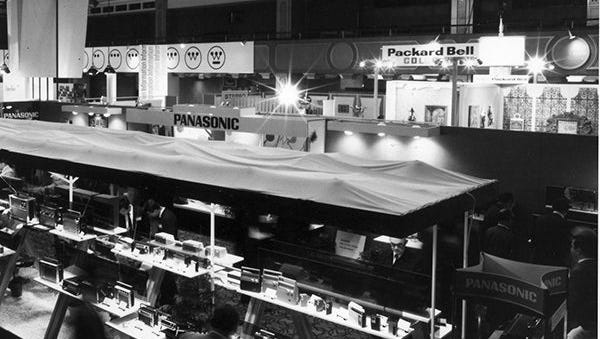This was cutting edge tech 50 years ago

The iPhone at 10 isn’t the only tech milestone being celebrated this week. A half-century ago marked the very first Consumer Electronics Show, the forerunner of the trade event held annually in Las Vegas.
A quick tech tour down memory lane:
In 1967, the inaugural CES took place in New York City, where it attracted 17,500 attendees and 117 exhibitors, the main ones housed in one of two midtown Manhattan hotels. By way of comparison, more than 180,000 people attended the latest CES this past January in Vegas, a show with north of 4000 exhibitors
The roster of companies showcasing products during the first CES included 3M, Memorex (now MEM-CE), Motorola (now part of Lenovo), Panasonic-Matsushita, Philips, RCA (now a Technicolor brand), Sanyo Fisher (now part of Panasonic), Sharp, Sony, Toshiba, Westinghouse and Zenith (now part of LG).

So what was the hot tech during the LBJ administration?
The 1966-67 TV season was the first in which the three major TV networks — yes only three — broadcast their entire prime-time schedules in color, and this was considered the time when the sets themselves became "affordable." Many companies slashed color TV pricing by about 5%-10%.
At that maiden CES, for example, GE showcased a 24-pound portable color TV that it billed as the “first under $200 set ever sold.”
Portable TV was itself a fairly new category, although the definition of what was considered portable (up to 45 pounds) is debatable.
Hi-fi (stereo) components, mostly two-channel stereo receivers and phonographs/turntables, were also in vogue. As were hi-fi speakers, including floor-standing, bookshelf and "console" models. Stereo consoles consisted of large credenza-type furniture units, often with TVs built-in.
Other products at CES back then included the Sony/Sony-Superscope (H-130, H-131), a “Pocket Cassette-Corder, that was a thicker version of the Sony Walkman that would debut about a dozen years later, minus the headphones that the Walkman had. It cost less than $100 and ran on 4 AA batteries.
Portable audio generally consisted of transistor radios of varying sizes, and “party player” record players with built-in speakers. Kids could stack a dozen or so “45 RPM” records on them.
Format wars have often defined CES and the electronics industry through the years, and that was the case even in 1967. The debate was over the emerging 8-track cartridge versus cassette formats. Consumers back then could still purchase reel-to-reel tape recorders.
Among the most interesting tidbits to emerge from the first CES was a print advertisement Ford-owned Philco ran in a show publication. Philco was predicting what TV would look like in 1999 on the cusp of the 21st century.
“If you plan to sell much color TV in 1999, you'd better brush up on your holography,” the ad proclaimed.

“3-D color TV that lets you see round corners — holographic TV — will be quite common in middle-income homes by 1999. So will color TV telephones, electronic education systems and electronic organs that let you play a full orchestra.
“The home entertainment business is going to look very different just 32 years from now, and so is the appliance business. Big-selling items will be meal programmers, sonic-wave cleaners and micro-wave cookers.”
Predictions, anyone, of what tech will look like 32 or 50 years from now?
Email: ebaig@usatoday.com; Follow USA TODAY Personal Tech Columnist @edbaig on Twitter